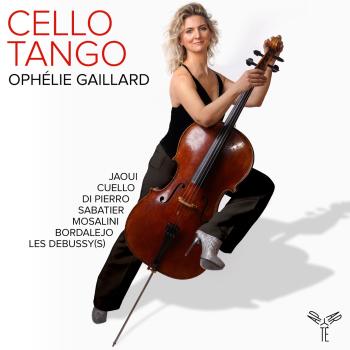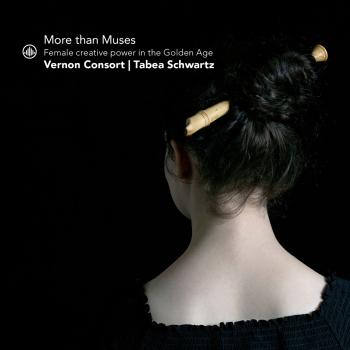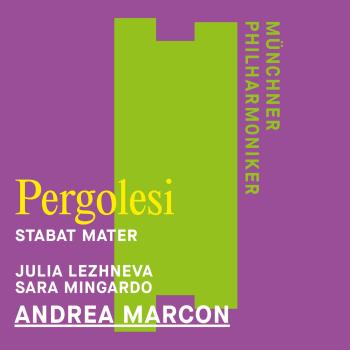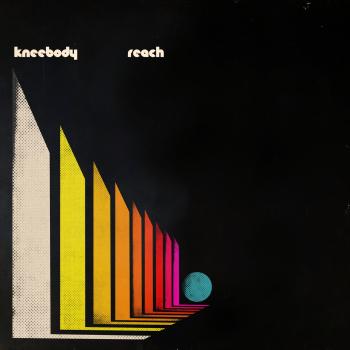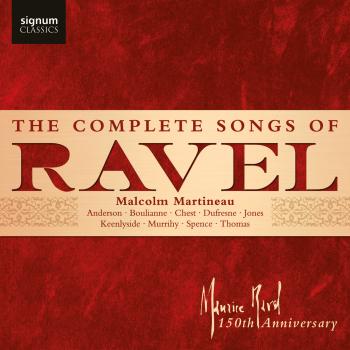
Blanc Bernat Vivancos
Album info
Album-Release:
2013
HRA-Release:
24.02.2020
Label: Neu Records
Genre: Classical
Subgenre: Choral
Artist: Bernat Vivancos
Composer: Bernat Vivancos
Album including Album cover Booklet (PDF)
- 1 Obriu-me els llavis, Senyor 14:51
- 2 Messe aux sons des cloches - I Kyrie 02:44
- 3 Messe aux sons des cloches - II Gloria 05:46
- 4 Messe aux sons des cloches - III Sanctus 02:21
- 5 Messe aux sons des cloches - IV Agnus Dei 02:59
- 6 El cant dels ocells 06:25
- 7 Bubbles 03:42
- 8 A Child is born 08:10
- 9 Nigra sum 08:39
- 10 Salve d'ecos 09:04
- 11 Le cri des bergers 05:35
- 12 Nigra es, pulchra sum 15:45
Info for Blanc
This album comprises a selection of Bernat Vivancos’ most evocative choral works, and reflects an aesthetic approach that the composer began to develop during his stays in Paris and Oslo. Since then, Vivancos’ style has incorporated elements that make his music a unique proposition: music of rich sonority, texture and colour, where research into spectral inspired harmonies, western traditional modal music, and a constant interest to create a new and seductive dimension all converge, and where being transported by the sound itself is one of the main attractions. Contemplation and transcendence, always present in his music, are captured in works of great beauty, as 'Nigra sum', in which female voices elucidate the blackness of the Black Madonna venerated in the Shrine of Montserrat. Other works maintain a direct relationship with motifs or elements of other authors which inspire his melodic work, like 'Salve d’ecos' (on a 'Salve Regina' by Claudio Monteverdi), the 'Sanctus' from 'Messe aux sons des cloches' (invocation of the Gregorian Mass for the Dead), or 'Obriu-me els llavis, Senyor', which magnifies with 5 choirs Monk Gregory Estrada’s song, sung daily at dawn at Matins by the Benedictine community of Montserrat.
The study of spatial sound is present in much of his music and is represented in 'Bubbles', 'Le cri des Bergers' and also in 'Obriu-me els llavis, Senyor' and 'Salve d’ecos', where artificial resonances and polichorality give the listener a unique perception of the choir. In the 'Messe aux sons des cloches' the timbre of mixed voices mingles with the inspiring sound of 5 sets of strategically placed tubular bells and tam-tams. Other works of ascetic simplicity, like A 'Child is born', are built on musical calligrams based on texts and on a complementary musical pattern, forming a circle that could go infinitely. 'El cant dels ocells' –song of praise to the divine child and symbol of peace and freedom in Catalonia and around the world- is surrounded here by a halo of static sounds and modal hamonies, with the aim of avoiding traditional harmonization. And in 'Nigra es', 'Pulchra sum' and 'Nigra sum', sensuality and spirituality manifest jointly, recovered in a dream world. The biblical book Song of Songs becomes thus the source of inspiration in which seduction and faith converge.
Bernat Vivancos' music is like a city of angels: 'blissful sounds populated by saintly spirits hiding between the notes as birds in a tree.' (Lasse Thoresen)
'The Latvian Radio Choir signs this wonderful project with a ravishing sound and a portentous performance, overwhelming.' (Diverdi Magazine)
Bernat Vivancos, composer
Latvian Radio Choir
Latvian Radio Chamber Singers
Sigvards Klava, conductor
Music Production and Sound by Santi Barguñó and Hugo Romano Guimarães
Sound engineering assistants: Andris Uze (Riga), Lluís Miquel Soler i Farriols (Montserrat)
Executive Production: Mireia Pacareu
Produced by Santi Barguñó
Recorded at St John's Church in Riga (Latvia) in January 2011
Bernat Vivancos
Bernat Vivancos i Farràs (Barcelona, 1973) began his musical studies with his father and later at Escolania de Montserrat under the direction of Father Ireneu Segarra. After obtaining his degree in piano with Maria Canals and studying composition with David Padrós, he moved to Paris where he studied composition, orchestration and analysis at the city’s Conservatoire with teachers Guy Reibel, Frédéric Durieux, Marc-André Dalvabie, and Alain Louvier. After a stay in Oslo with composer Lasse Thoresen, he returned to Barcelona where he became professor of composition and orchestration at Escola Superior de Música de Catalunya (Catalonia’s Higher School of Music). In 2007 he was appointed music director of Escolania de Montserrat (Montserrat Boys Choir), a post he combines with his teaching and research in the field of composition. Vivancos has an extensive repertoire of vocal and instrumental music, with particular attention to orchestral production, and receives commissions from the most prestigious international orchestras, ensembles and organisations.
Latvian Radio Choir
The Latvian Radio Choir, founded in 1940, has been lead by Sigvards Klava and Kaspars Putnins since 1992. The choir's repertoire embraces the Renaissance era and contemporary music, with particular emphasis on the works of Latvian composers. Thanks to recordings made by the Latvian Radio Choir, in recent years several Latvian composers have been awarded at the UNESCO International Rostrum for Composers: Eriks Esenvalds, with 'Légende de la femme emmurée', in 2006; Martins Vilums, with 'Le temps scintille', in 2005; and Kristaps Petersons with 'Mijkresla dziedajumi' (Twilight Chants), in 2010. In 2005 the Latvian Radio Choir established an association of professional choirs, TENSO, along with Accentus (FR), Nederlands Kamerkoor (NL), and RIAS Kammerchor (DE), in order to create a platform for dialogue between professional choirs, ensembles, composers, students, conductors, and listeners. The association's goal is to help develop European vocal arts, to study our musical heritage, and promote the creation of original works. TENSO also organizes seminars and master classes for singers and young composers. This not only encourages fresh ideas in the field of vocal music, but also helps us understand the unlimited possibilities inherent in the human voice. The Latvian Radio Choir expands and diversifies its activities by participating in theatrical productions and multimedia projects. The choir has collaborated with Scotland's Tramway Theater and Denmark's Pro Forma Hotel, and has performed works by Nic Gotham and ?irts Bišs at the Latvian National Opera. The choir has won the Latvian Great Music Award several times - in 1994, 2000, 2004, 2005 and 2007. The Latvian Radio Choir has made more than forty recordings, including compact discs released by companies such as Ondine, Naïve, Gavin Bryars Records and BIS. www.radiokoris.lv
Latvian Radio Chamber Singers
The Latvian Radio Chamber Singers, established by Kaspars Putnins in 1994, is a vocal ensemble formed by members of the Latvian Radio Choir. The ensemble specializes in exploring new possibilities for the human voice and searching for new ways and kinds of musical performances. Their repertoire mostly consists of contemporary music. The singers perform works by Luciano Berio, Iannis Xenakis, Kaija Saariaho, Giacinto Scelsi, and other composers of the 20th and 21st century. The Latvian Radio Chamber Singers often participate in many important Baltic and European music festivals: Strasbourg's La Musica, Oxford Contemporary Music Festival, März Musik in Berlin, Klangspuren Festival in Austria, Time of Music in Finland, NYYD Festival in Tallinn, and the Gaida Festival in Vilnius.
Sigvards Klava
Sigvards Klava (1962) began working with the Latvian Radio Choir in 1987 and became the choir's chief conductor and artistic director in 1992. He graduated from the Latvian Academy of Music and has studied at the St. Petersburg Academy of Music, the Bach Academy in Stuttgart, and the Oregon Bach Festival master classes in the United States. Sigvards Klava has collaborated with all the leading Latvian choirs and orchestra, performing music by Bach, Vivaldi, Mozart, Bruckner, Brahms, Gounod, Schnittke, and many other international composers, as well as original works by many Latvian composers. During the course of a single year, Klava produces approximately twenty different concert programs, performed both in Latvia and abroad. He has recorded more than twenty albums with the Latvian Radio Choir, and has served as chief conductor at the Latvian Song Festival and the Baltic and Nordic Song Festival. Klava has received the Latvian Great Music Award and the Latvian Cabinet of Ministers Award several times. He has performed at the Concertgebouw and Muziekgebouw of Amsterdam, Berliner Konzerthaus and Philarmonie, Théâtre des Champs-Élysées et Cité de la Musique in Paris, Bervaldhallen in Stockholm, Dresdner Frauenkirche, and many other churches and concert halls.
Booklet for Blanc

